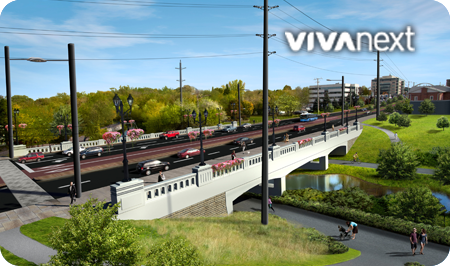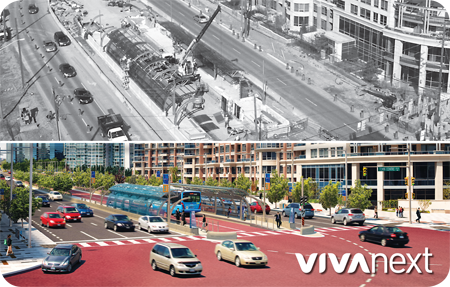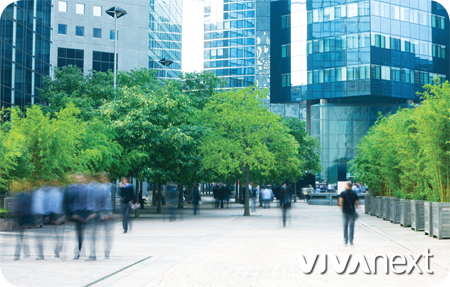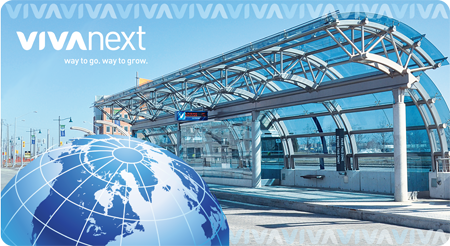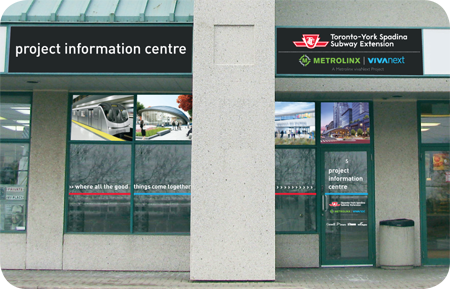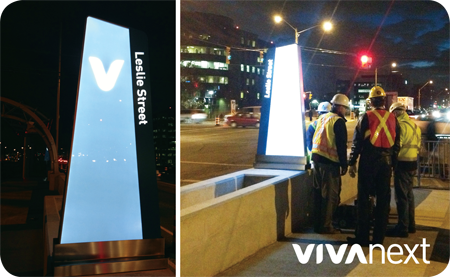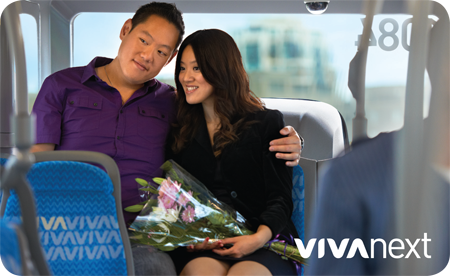With the early stages of rapid transit developments underway along Highway 7 West in Vaughan, now is the perfect time to reflect on everything this great city has to offer. Already an attractive destination for residents, businesses and visitors, Vaughan is a perfect location to integrate Bus Rapid Transit (BRT) rapidways and cultivate a thriving transit system.
Vaughan is comprised of six communities including Maple, Woodbridge, Kleinburg, Concord, Thornhill and Vaughan Metropolitan Centre [VMC]. With a growth rate of 80.2%, it was the fastest growing municipality in Canada from 1996-2006, and this diverse city shows no signs of slowing down. The nation’s largest amusement park, Canada’s Wonderland, averages approximately 3.5 million visitors per season and the Kortright Centre for Conservation hosts around 135,000 visitors annually.
Vaughan is also home to many social, historical and cultural hotspots that maintain its reputation as a vibrant place to live, work, shop and eat. Residents and visitors can browse over 200 retail stores at Vaughan Mills, the 15th largest mall in Canada, or view an extensive collection of paintings by Tom Thomson, the Group of Seven and their contemporaries at the McMichael Canadian Art Collection in Kleinburg. Before hopping on a viva bus home, stop by Reptilia Zoo and visit “The King” – the largest venomous Cobra snake at any zoo in Canada, or tour the Thoreau MacDonald House – home of the Group of Seven painter J.E.H MacDonald from 1914 to 1974. Other various parks, theatres, recreation centres and educational institutions leave no shortage of things to do and explore.
The future rapidway vivastation at VMC will make travelling to and from your favourite places in Vaughan easier and more efficient. In the VMC, mixed-use transit-oriented development is proposed along a tree-lined main street, including businesses, residences, entertainment and cultural facilities, as well as pedestrian shopping areas. With connections to both the new TTC subway station and an inter-regional bus terminal, VMC will be one of the most ambitious development projects in the area’s history. It will be a convenient transportation hub unique to the city, and yet another main attraction that Vaughan can call its own.
Check out some more fast facts about Vaughan below:
- Non-official languages include:
Italian – 15.2% | Russian – 6.7% | Spanish – 2.7% | Tagalog (Filipino) – 1.9% | Punjabi – 1.8% - Twin city: Lanciano, Italy (2002)
- Folklore associates the name “Maple” with the numerous Maple trees once found along Keele St.
- The name “Woodbridge” derived from a wooden bridge that crossed the Humber River as an entry point into the town
- A direct German translation of “Kleinburg” is small town
Follow the progress of the Highway 7 West rapidway in Vaughan by signing up for construction updates.
Think you know Vaughan? Test your knowledge with our interactive quiz! Play now.


